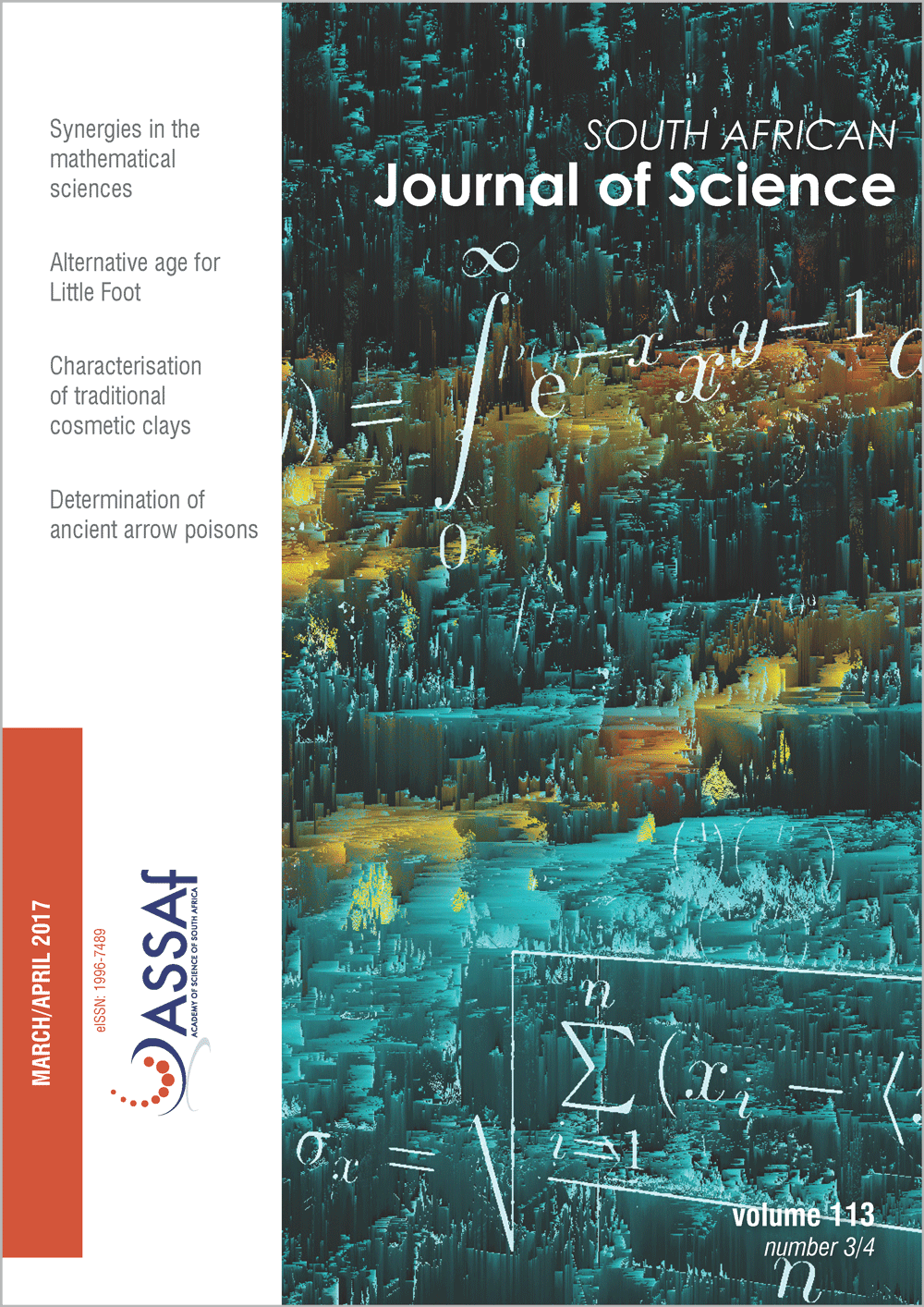A historical assessment of sources and uses of wheat varietal innovations in South Africa
DOI:
https://doi.org/10.17159/sajs.2017/20160008Keywords:
variety improvement, wheat research, Agricultural Research CouncilAbstract
We undertook a historical review of wheat varietal improvements in South Africa from 1891 to 2013, thus extending the period of previous analyses. We identified popular wheat varieties, particularly those that form the basis for varietal improvements, and attempted to understand how policy changes in the wheat sector have affected wheat varietal improvements in the country over time. The empirical analysis is based on the critical review of information from policies, the varieties bred and their breeders, the years in which those varieties were bred, and pedigree information gathered from the journal Farming in South Africa, sourced mainly from the National Library of South Africa and the International Maize and Wheat Improvement Center (CIMMYT) database. A database of the sources and uses of wheat varietal innovations in South Africa was developed using information from the above sources. The data, analysed using trend and graphical analysis, indicate that, from the 1800s, wheat varietal improvements in the country focused on adaptability to the production area, yield potential and stability and agronomic characteristics (e.g. tolerance to diseases, pests and aluminium toxicity). An analysis of the sources of wheat varietal improvements during the different periods indicates that wheat breeding was driven initially by individual breeders and agricultural colleges. The current main sources of wheat varietal improvements in South Africa are Sensako, the Agricultural Research Council’s Small Grain Institute (ARC–SGI) and Pannar. The structural changes in the agricultural sector, particularly the establishment of the ARC–SGI and the deregulation of the wheat sector, have helped to harness the previously fragmented efforts in terms of wheat breeding. The most popular varieties identified for further analysis of cost attribution and the benefits of wheat varietal improvements were Gariep, Elands and Duzi.
Significance:- These findings form the basis for the next analysis focusing on the attribution of the benefits and costs in terms of investment in wheat breeding in South Africa.
Downloads
Published
Issue
Section
License

All articles are published under a Creative Commons Attribution 4.0 International Licence
Copyright is retained by the authors. Readers are welcome to reproduce, share and adapt the content without permission provided the source is attributed.
Disclaimer: The publisher and editors accept no responsibility for statements made by the authors
How to Cite
- Abstract 829
- PDF 1010
- EPUB 196
- XML 288
- Supplementary Material 193












.png)